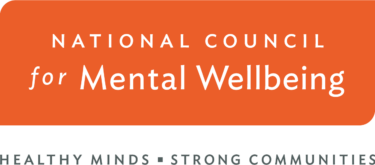
Substance use prevention has changed. Gone are the days of simplistic “Just Say No” campaigns and school assemblies that failed to address real-world challenges. Prevention today is more dynamic, personal and grounded in science, identity and lived experience. It is about equipping youth, not just warning them. Prevention now celebrates identity, fosters resilience and builds communities where substance use holds less appeal. The core goal remains the same — reduce risk factors and strengthen protective ones — but the strategies we use have evolved to meet the complexity of modern life.
The New Landscape of Substance Use
As today’s drug supply grows more lethal, experimenting even once can be deadly. Traditional prevention strategies based on lower-risk trial and error no longer match the urgency of the current landscape. Effective prevention must begin earlier and reflect the real-life experiences of young people, many of whom have already encountered substance use, often within their families or alongside trauma and mental health challenges.
At the same time, the digital world now shapes adolescent life. Social media platforms influence behavior, expose youth to online drug sales and amplify mental health struggles. To be effective, prevention must extend into digital spaces, integrating online safety, digital literacy and strategies to minimize harm.
These shifts call for a more responsive approach, one that equips youth not only to avoid substances, but also to stay safe, seek help and build resilience in high-risk environments. Just as school safety has adapted to modern threats, prevention must adapt to modern substance-related risks and influences.
The Evolution of Prevention Messaging
Substance use prevention is most effective when it reflects the values, language and lived experiences of the communities it serves. Young people are more likely to respond to messaging that feels relevant and authentic, especially when it strengthens identity, fosters belonging and is informed by voices they recognize. Rather than relying on broad, generic campaigns, prevention should be rooted in local tradition and shaped by those directly impacted.
Modern prevention is shifting from simple awareness to building real-life skills, and shifting from purely subtractive to increasingly additive. Emotional regulation, coping strategies, refusal techniques and resilience are essential tools that help youth navigate pressure and stress without turning to substances. But prevention isn’t just about avoiding harm; it’s about filling lives with meaning, purpose and pride.
Celebrating tradition and shared history nurtures a sense of belonging that counteracts the isolation, fear and lack of structure that can lead to substance use. When young people feel rooted in something greater than themselves, they are more likely to make choices that align with their values and aspirations. Communities should be the architects of their own prevention strategies, with initiatives shaped by the very individuals they aim to support.
Campaigns like La Nueva Drug Talk demonstrate how prevention can evolve to meet youth where they are. These efforts engage youth in honest, culturally grounded conversations that reflect young people’s realities. Instead of using fear, successful campaigns offer practical guidance, promote healing and foster empowerment, centering prevention on connection, not avoidance. Communities with histories of trauma and loss are creating spaces for healing, drawing on traditions, rituals and shared practices to strengthen resilience.
New Voices Are Leading the Prevention
Substance use prevention is no longer limited to scripted presentations from uniformed officers. Today, it reflects a wider range of credible voices, especially those with lived experience. This includes individuals in recovery, as well as parents, siblings and extended family members who have lost loved ones to substance use. Many of the most powerful messengers in prevention today are those who have been personally impacted and have turned their grief into action by founding organizations, leading advocacy efforts and speaking publicly in the wake of loss. Their involvement brings both urgency and authenticity to prevention conversations, helping to reduce stigma and open space for honest, meaningful dialogue.
When prevention grows from within, it becomes less about instruction and more about belonging, strengthening the ties that protect against substance use.
Prevention efforts are also shaped by trusted figures within the fabric of everyday community life. From parents guiding conversations at home to elders offering wisdom passed down through generations, prevention messages carry more weight when they come from voices people already know and respect. Local leaders such as school administrators and rural pastors help ground these efforts in the shared experiences and values of their communities. When prevention grows from within, it becomes less about instruction and more about belonging, strengthening the ties that protect against substance use.
Building on these trusted voices, prevention is expanding beyond traditional spaces. Messaging now appears in primary care offices, dental clinics, pharmacies and workplaces, and conversations take place in more personal, everyday settings like cars, coffee shops, living rooms and ballfields. By broadening both who delivers the message and where it’s shared, prevention becomes less of a scripted moment and more of a continuous conversation. When trusted voices speak in familiar spaces, the message feels more natural and more relevant, and it’s more likely to stick.
From a Lecture to a Dialogue
Substance use prevention messaging has shifted from one-directional, adult-to-youth lectures to bidirectional and lateral communication. Prevention is now a dialogue that moves in multiple directions: youth to parents, peer to peer and across generations. This shift recognizes that young people are not merely recipients of prevention messaging; they are active participants in the development and dissemination of such messages.
It is no longer just about telling youth what not to do, but about showing them what they can do to build purpose, connection and resilience.
To combat prevention fatigue, delivery methods have become more engaging and human centered. Storytelling, gamification and relatable narratives make prevention messaging resonate, replacing scare tactics with meaningful dialogue. The focus is no longer just on awareness but on action, equipping youth with practical tools and impactful messages that foster lasting change.
Prevention for Today and Tomorrow
As the landscape of substance use continues to evolve, prevention efforts are doing more than merely keeping pace. They are breaking free from outdated models and fundamentally reshaping themselves to address contemporary realities. Prevention now lives in real conversations, in everyday spaces, guided by a wider variety of trusted individuals. It is no longer just about telling youth what not to do, but about showing them what they can do to build purpose, connection and resilience.
Prevention isn’t a single moment; it’s a movement, woven into tradition, technology and identity. It is bold, dynamic and unapologetically relevant. And as the world continues to change, prevention will keep pushing forward — meeting people where they are, challenging outdated norms and ensuring that wellbeing isn’t just an option, but the standard.
Author
Senior Advisor, Substance Use Disorder in the Strategy and Growth Office
National Council for Mental Wellbeing
See bio
Guest Author
Director Multicultural Affairs
Song for Charlie



